(Photo above: Major Troy Gilbert, image from U.S. Air Force)
Future U.S. Air Force leaders at Texas Tech can drink a toast in a special place called Trojan Bar – named in memory of Maj. Troy Lee “Trojan” Gilbert.
Gilbert, a first-generation Red Raider, gave his life 17 years ago to save others in combat in Iraq.
The Air Force ROTC at Texas Tech dedicated a room to Gilbert’s memory and set aside space for the bar. In November, Tech honored Gilbert and others with a Military & Veterans Tribute Walk at Memorial Circle.
“Troy answered the call,” said Ginger Gilbert Ravella, Gilbert’s widow. Ravella spoke to LubbockLights.com last week.
That call was a desperate mayday from the crew of a downed helicopter 20 miles from Baghdad. An army calvary would come to the rescue except it got bogged down by heavy enemy fire. When Gilbert got the call, he was all that stood between American service members trapped at a wreckage site and certain death.
Meeting, marrying and flying
Ravella met Gilbert as a sophomore at Angelo State University. They would later transfer to Tech, she said.
“We graduated in 1993. I’m a third-generation Red Raider, and I’m proud of that,” Ravella said.
At first there was no opening for Gilbert to become a pilot, so he entered officer training school. Four years later, he got his shot.
“We were stationed all over the world, Italy, England,” Ravella said as she described “an incredible career.”
Gilbert picked up the nickname Trojan from fellow aviators.
“Troy was also working for President Bush for Air Force One. He was called an Air Force advance agent,” she said.
An advance agent travels out before Air Force One to make sure everything is safe and workable. He never flew Air Force One.
A wing commander at Luke Air Force Base was tasked to be the wing commander at the Balad Airbase in Iraq, she said.
“He took Troy with him as his top pilot,” she said. On November 27, 2006, Gilbert was three months into a four and-a-half month deployment. By now, Ravella was the mother of their five children.
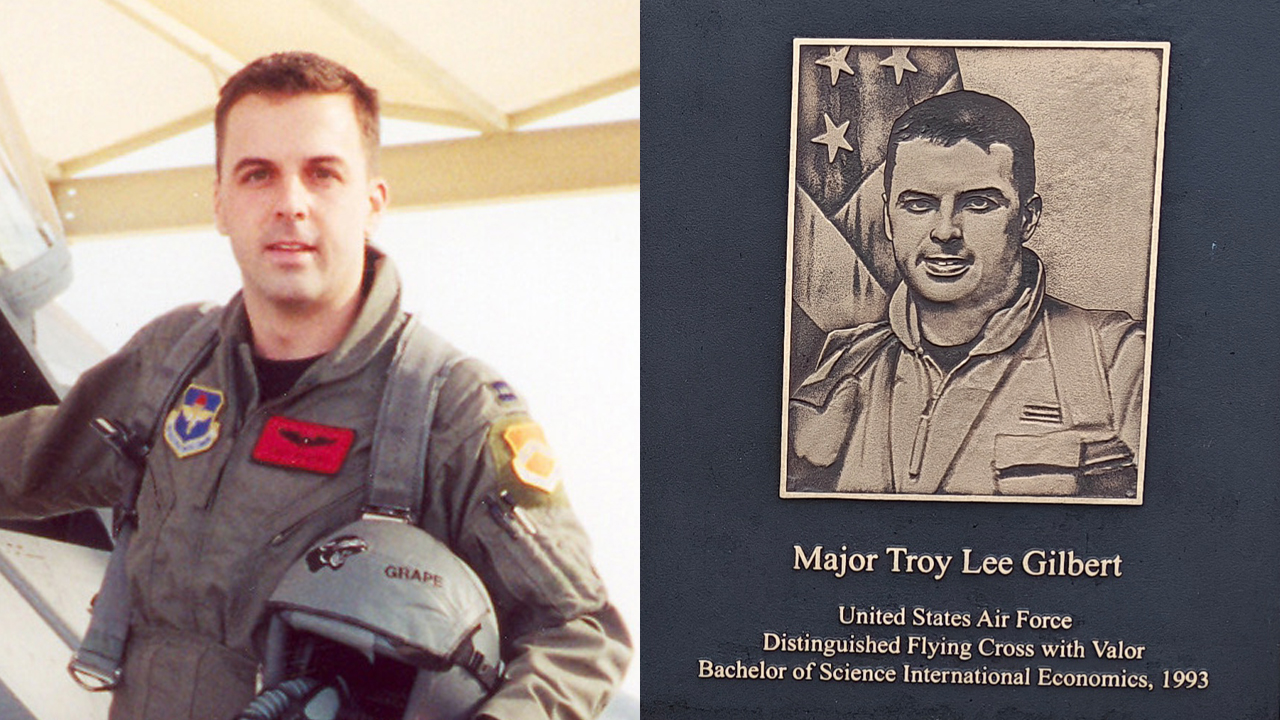
The Little Bird shot down
A U.S. Air Force statement in 2016 said, “Gilbert and his wingman were flying back to base when they got the call that an AH-6 Little Bird helicopter had been shot down. Enemy insurgents had the crew, along with the coalition forces called in to support, outnumbered and pinned down.”
“To avoid causing civilian casualties by dropping the bombs he carried under his wings, he opted for low-altitude strafing passes using his 20-milimeter Gatling gun,” the statement said.
Ravella believes Gilbert saved both the lives of the Little Bird crew and a nearby Army cavalry unit.
“This cavalry unit was trying to get in on foot, but hit just a wall of Iraqis,” Ravella said.
An Army commander wrote to Ravella that Gilbert saved his unit from “almost certain disaster.”
His last pass over the enemy was too low; his plane hit the ground, and it cost Gilbert his life.
The knock at the door
On a Monday after Thanksgiving she got a knock at the door, she said.
“They told me Troy and his plane had gone down in a combat mission west of Baghdad earlier that morning,” Ravella said.
“I obviously prayed that he had ejected and was safe,” Ravella said. Eight hours later, there was another knock at the door. It was not good news.
“I was 36 and became a widow with five little kids. So, all of the sudden, our story became front page news – CNN and Fox – it was just a nightmare.”
“The search would be ongoing for ten years for his remains,” Ravella said.
The Air Force said, “Al Qaeda insurgents took Gilbert’s body before U.S. forces were able to get to the scene.”
With nothing more than fragments of his body, Gilbert received a burial at Arlington with full honors in December 2006. Then, with the recovery of more of his body, a second full service honored Gilbert again in December 2013. It would take until December 2016 to recover his full body and hold one last service.
“My kids and I went back to Arlington National Cemetery three times for three funerals.”
Time confirmed her claim that Gilbert was the first to be buried three times in “the nation’s most hallowed grounds.”
Time also reported Gilbert’s body was used as both a war trophy and a propaganda tool. An Al Qaeda website posted a video of Gilbert’s body and blamed President George W. Bush for the war in Iraq.
Ravella thinks the insurgents also wanted money.
“I never got his wedding ring or his suit. Those were all gone,” she said. However, not all was lost.
“In 2016, when they recovered his body, he was still in his flight suit – his flight jacket,” Ravella said. “It was on him buried for ten years. And they cleaned it, and amazingly we have it.”
“I’m grateful for it. I’m grateful for that recovery,” Ravella said.
Room dedicated for Gilbert
The Air Force ROTC Detachment 820 at Texas Tech said it was an absolute honor to dedicate space for Trojan Bar.
Lt. Col. Daniel O’Brien, the detachment commander, said it was an even bigger honor to spend an evening with Major Gilbert’s family in mid-November.

“We will never forget this servant leader. It is such an honor to share in such a rich heritage,” O’Brien said.
A statement from Air University, housed at the same air base where Gilbert was commissioned, said, “Remembering his warrior spirit is what the members of Detachment 820 will do every time they ring the bell and propose a toast at ‘Trojan Bar.’”
Ravella said, “I think the bar at the ROTC center – that would probably be his favorite thing ever.”
“All squadrons have a little bar where the guys get to hang out after work and talk about flying stories,” Ravella said. “He wouldn’t believe all that they did for him.”
Tech has a Wall of Honor at Memorial Circle which bears a commemorative plaque with Gilbert’s name and likeness.
“I feel like it’s such a sweet gift,” Ravella said. “His image and his story will just live there and get to be part of the rest of the university history.”
(Slideshow images from Memorial Circle on the campus of Texas Tech)
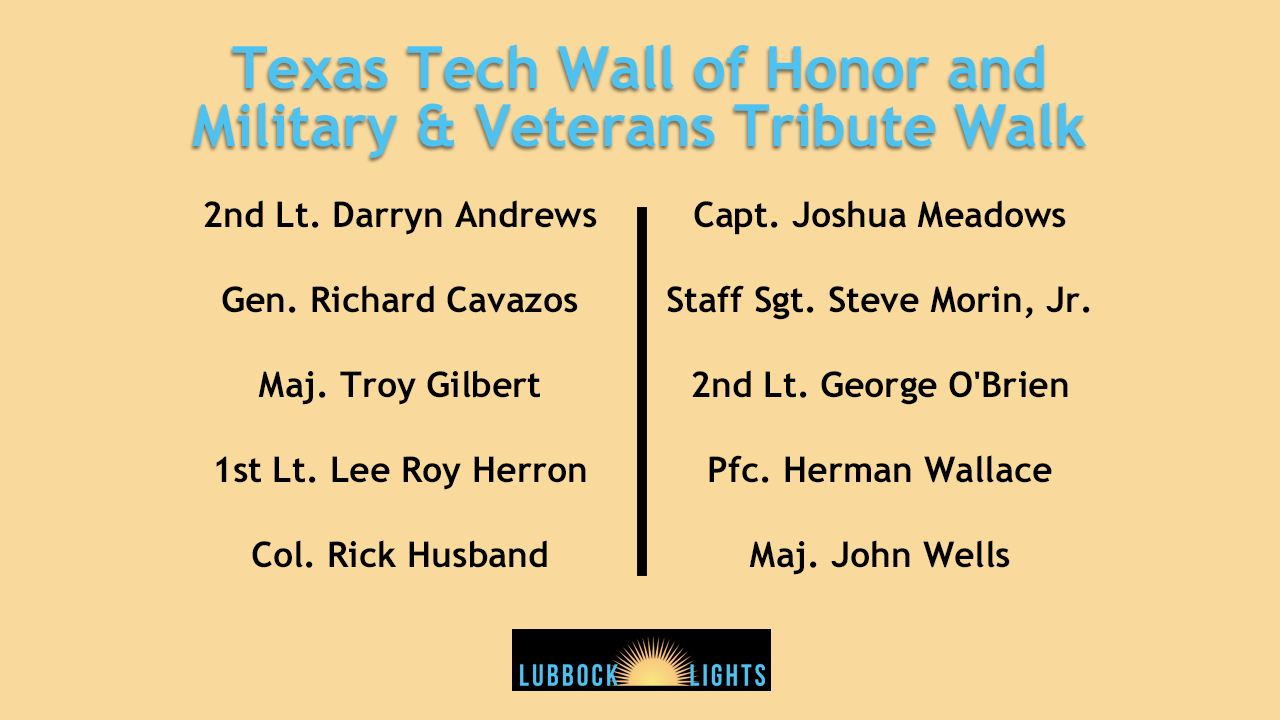
Other Red Raider heroes honored
In 2009, 2nd Lt. Darryn Deen Andrews, a Tech graduate who was awarded a Texas Legislative Medal of Honor, was serving in Afghanistan when his unit was attacked.
A Texas House resolution said, “With no thought for his own safety, Lieutenant Andrews tackled three of his comrades to protect them from being hit; he died of the wounds he incurred in that act of selfless courage.”
In May, the Army renamed Fort Hood to Fort Cavazos in honor of Gen. Richard Edward Cavazos who was a Tech graduate and the recipient of the Silver Star, the Distinguished Service Cross, and the Bronze Oak Leaf Cluster.
First Lt. Lee Roy Herron, a Navy Cross recipient and Tech graduate, was serving in Vietnam in 1969. He and his follow Marines were pinned down by enemy fire, according to the Vietnam Center at Texas Tech. Herron charged a bunker and killed the North Vietnamese inside. While assaulting a second bunker he was killed by an enemy sniper.
Col. Rick Husband, a Tech graduate and Congressional Space Medal of Honor recipient, was commanding the Space Shuttle Columbia in 2003 in the skies over West Texas when the shuttle and crew perished during re-entry.
Capt. Joshua S. Meadows, a Bronze Star recipient and Texas Tech graduate lost his on a combat mission in Afghanistan while supporting Operation Enduring Freedom in 2009.
Staff Sgt. Steve Morin Jr., a Bronze Star recipient and Tech graduate, was killed by an IED in 2005, west of Umm Qasr, Iraq, according to the scholarship program which bears his name.
Tech graduate and 2nd Lt. George O’Brien, a Medal of Honor recipient, led a Marine platoon in 1952 through battle in North Korea for four hours even after he was wounded multiple times. He lived until 2005.
Pfc. Herman Wallace was a Medal of Honor recipient and studied one year at Texas Technological College (later Texas Tech). In Germany, 1945, he stood firmly on an activated mine instead of stepping aside to give other soldiers the best chance to survive.
Maj. John Wells, a Navy Cross recipient and Texas Technological College graduate, was the Marine who led the charge to place the first American flag above Iwo Jima, according to the Marine Corps Times. He died in 2016.

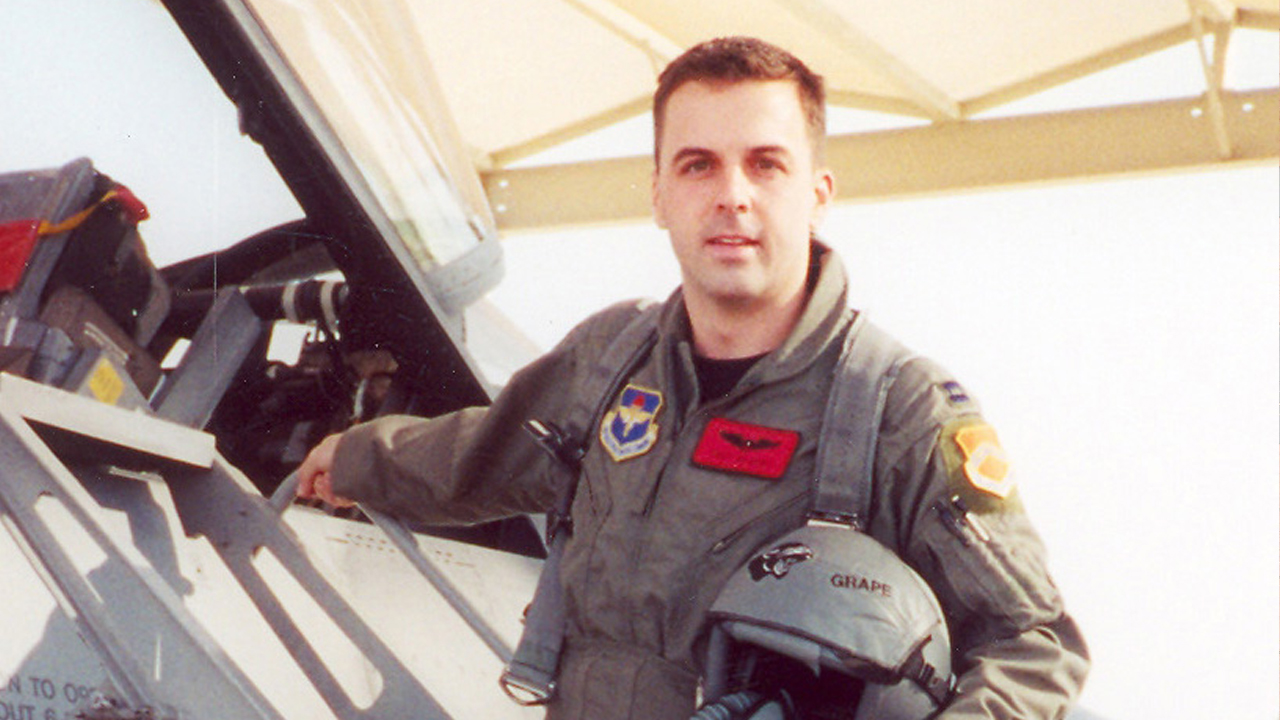
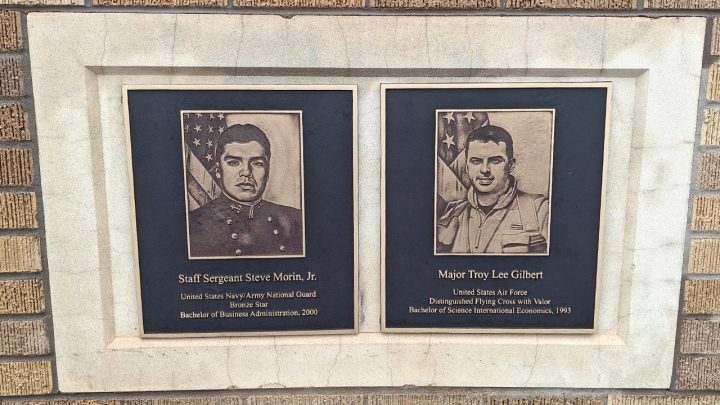
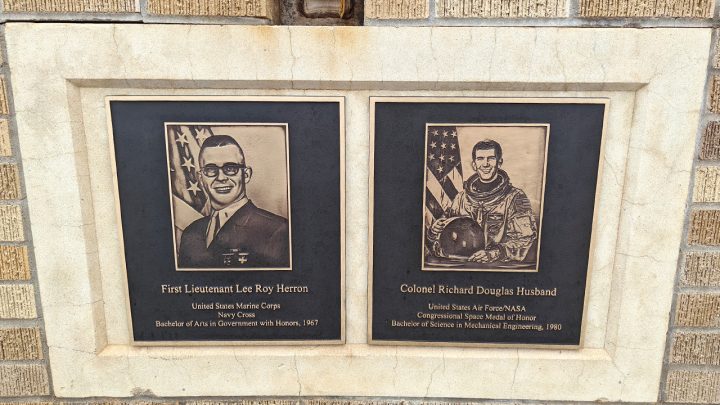
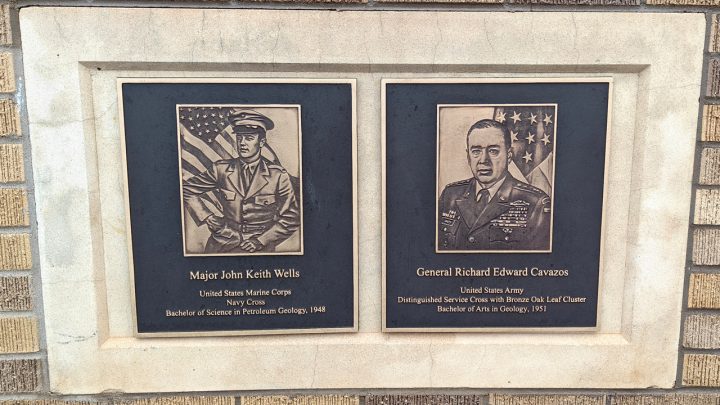
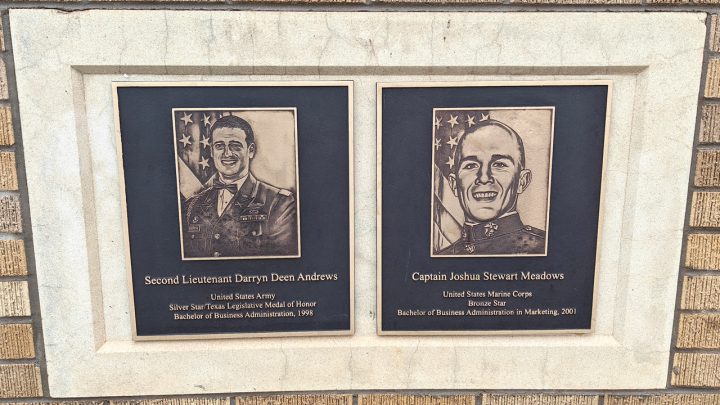
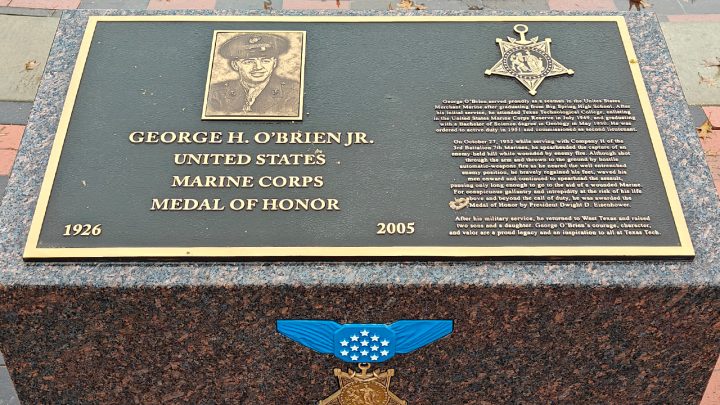
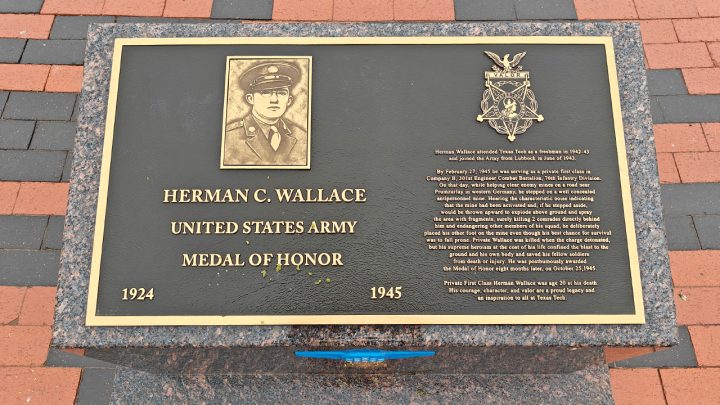
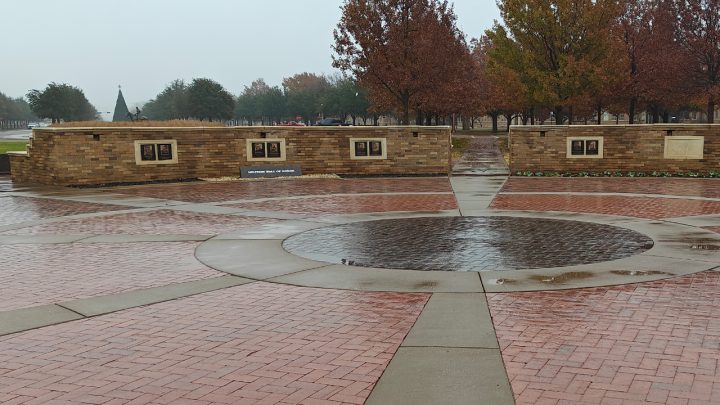
 Facebook
Facebook